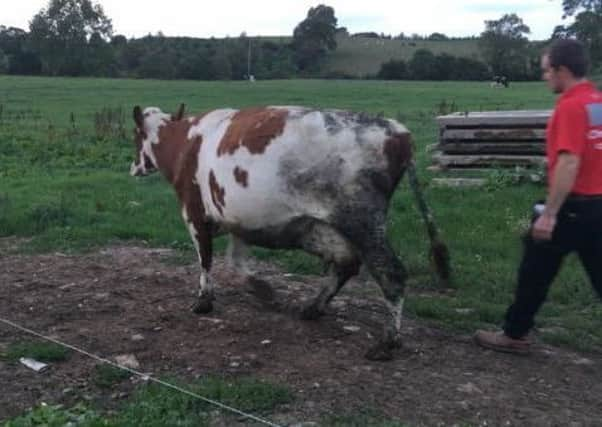Yorkshire vet Julian Norton tasked with untwisting cow's insides


She had been off it all afternoon (I knew the feeling), but Tim, the farmer, couldn’t put his finger on the problem.
“She doesn’t want to come in to be milked and she looks poorly,” he explained down the phone, “She’s quite bloated, too.”
Advertisement
Hide AdAdvertisement
Hide AdIt wasn’t much to go on. Adult milking cows do not usually suffer from the classic and easily fixed bloat that affects their younger counterparts, as a result of overeating the wrong sort of food. So, as I headed out to see this mystery cow, despite my fatigue, I felt a surge of anticipation.
Sure enough, the cow, still lying by herself in the field, looked awful. Her nose was resting on the ground – a sign that she felt too weak to lift her head.
As I started to examine her, she struggled to her feet and began slowly to make her way towards the farm buildings. It was a walk she knew well, as this herd used a robotic milking machine. The cows were free to walk from the fields to the parlour whenever they wanted to be milked.
My initial examination didn’t tell me much but, once we had ushered her into the crush, it was the rectal that yielded more information. I could feel a large, distended part of the large intestine on the right – this was not normal. It was tight and painful, and prodding it caused my patient to let out a low-pitched “moo”.
Advertisement
Hide AdAdvertisement
Hide AdI listened with my stethoscope over the corresponding area on her right flank. High on this side I could hear a high-pitched pinging, characteristic of a section of the intestine full of trapped fluid and gas. I made a diagnosis of a caecal torsion – the cow equivalent of a severe case of appendicitis.
We briefly discussed the options. The prognosis was grave. She had zero chance of survival without surgery, but to operate was also risky and carried no guarantee of success. But Tim wanted to do everything we could.
“Well, we have to give her a chance, don’t we?” he said, “She’s the one you saw last year with the bad foot. She recovered from that and she’s a good cow. You’d better crack on.”
Tim’s facilities were fantastic. The shiny new cattle crush even had an opening door to allow me access to her right side, and I had soon clipped, prepped and anaesthetised the area.
Advertisement
Hide AdAdvertisement
Hide AdSure enough, just as I had expected, the affected part of the bowel was full of gas, distended and fluidy. I made an incision into the over stretched caecum, releasing the most enormous amount of gas and stinking brown fluid, trapped there because of the twist.
Then I repaired the incision and, with eyes closed to help me visualise the direction of the twist, unwound the torsion. The rest was routine – closing the muscles and skin. This bit, at least, I’d done hundreds of times before. As for the diagnosis and untwisting of the caecum – this was just my second case.
Tim and I, and the assembled onlookers, who had variously appeared during the operation, all convinced ourselves that she looked better as she picked her way back to the field than she had on her way in. Only time would tell.
Julian Norton’s new book, The Diary of a Yorkshire Vet, is available via www.ypbookoffer.co.uk or call 01274 735056. £11.99 each.
